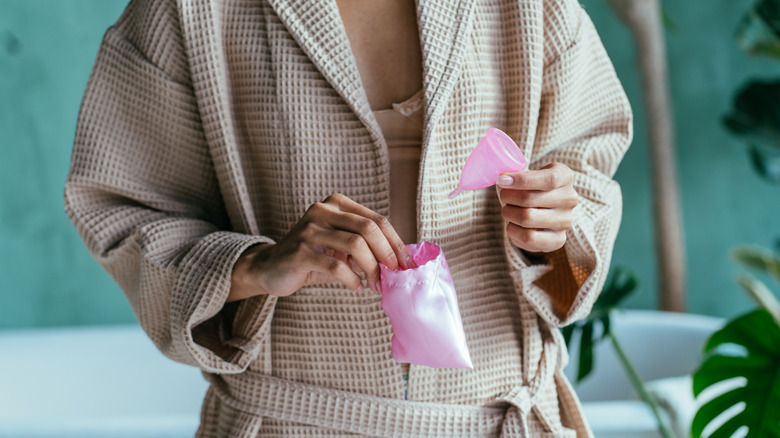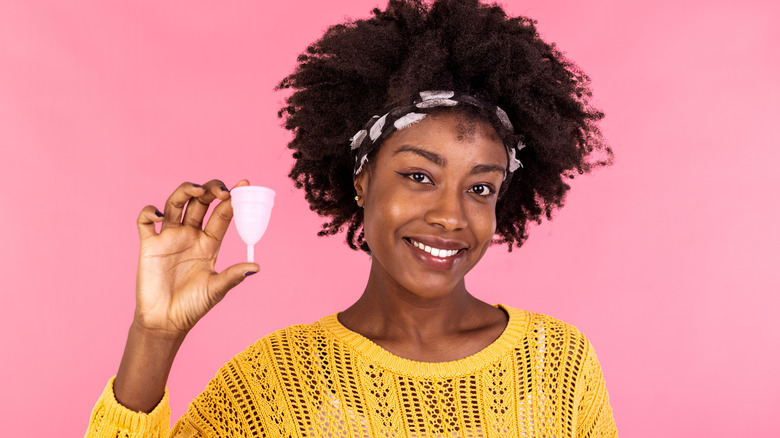The Benefits Of Switching To A Menstrual Cup
The average menstruator will experience 450 periods during their lifetime, according to the organization Helping Women Period. That comes out to be a whopping 3,500 period days. With so much time spent menstruating, it's important to have a plan in place to manage symptoms — especially blood flow. Period products like tampons and pads help make this possible.
The Center for Young Women's Health explains that period products can be divided into two categories: internal, where products are inserted into the vagina, and external, including barriers like pads and panty liners. Tampons are the most popular type of internal product, though menstrual cups have been gaining popularity in recent years (per Mayo Clinic Health System).
Menstrual cups are flexible cups generally made of silicone, rubber, latex, or thermoplastic elastomers. They're inserted into the vagina, where they collect blood and discharge during menstruation. Period product brand Lunette notes that the modern menstrual cup first debuted in 1937, though it was a flop on the market for several decades.
These days, menstrual cups are becoming more mainstream, but are they worth the switch?
Reasons to use menstrual cups
According to Healthline, there are practical benefits of using menstrual cups over other types of period products. Cups are reusable, so they save users money while contributing less waste to the environment. They're also safe to use. Leaving a tampon in for a long time could lead to toxic shock syndrome (TSS). Cups, on the other hand, can be left in for up to 12 hours before needing to be removed and cleaned (per WebMD).
Menstrual cups are also very effective at preventing period-related accidents. Dr. Anna Targonskaya, an ob-gyn and medical consultant at Flo, says that cups don't leak when used properly. She also explains that they can hold up to 41 milliliters of fluid, compared to ultra-size tampons that typically absorb less than half that amount. This makes cups a reliable choice for even heavy period days.
But what about the people who have actually tried menstrual cups? According to one 2019 research article published in The Lancet, 73% of participants who tried a menstrual cup during a study wanted to continue using the cup after the study was over. However, as Dr. Targonskaya points out, menstrual cups aren't always better than tampons and pads. Instead, it all comes down to trying different period products and determining which is best for your body and lifestyle.


